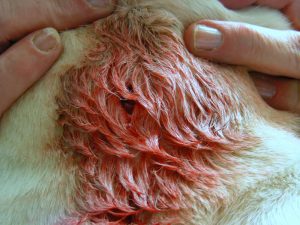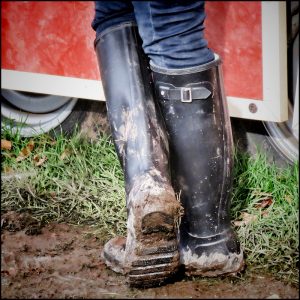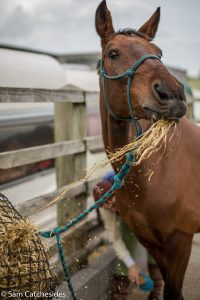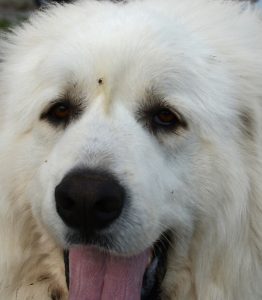Skill Group: Biosafety and Biosecurity
Risk Assessment and Introduction to Personal Protective Equipment (PPE) Part 3
Routes of pathogen transmission
Understanding routes of pathogen transmission and how this contributes to the spread of pathogens, allows for the identification of effective PPE selection and use. Pathogens can be transmitted by five main routes: direct contact, fomites, aerosol (airborne), oral (ingestion), and vector-borne. Some microorganisms can be transmitted by more than one route.
Direct contact
Direct contact transmission occurs through direct body contact with tissues or fluids of an infected individual. Physical transfer and entry of microorganisms occurs through mucous membranes (e.g., eyes, mouth), open wounds, or abraded skin. Direct inoculation can occur from bites or scratches. Common disease examples include: rabies, leptospirosis, and ringworm.

Fomite Transmission
Fomite transmission involves inanimate objects contaminated by an infected individual that then come in contact with a susceptible individual. Fomites can include a wide variety of objects such as exam tables, cages, lead rope, stalls, medical equipment, environmental surfaces, and clothing. Disease examples include canine parvovirus and salmonellosis.

Aerosol/Airborne Transmission
Aerosol/airborne transmission involves the transfer of pathogens via very small particles or droplets. These particles may be inhaled by a susceptible host or deposited onto mucous membranes or environmental surfaces. This can occur from coughing, sneezing, or even breathing by an infected individual, as well as during certain medical procedures (e.g., suctioning, bronchoscopy, dentistry, inhalation anesthesia). Examples of common diseases transmitted by this route include Bordetella bronchiseptica (one of the agents of kennel cough/canine infectious respiratory disease complex) and influenza.

Ingestion
The ingestion of pathogenic organisms can occur from contaminated food, water, or by licking or chewing on contaminated objects or surfaces. Environmental contamination is most commonly due to exudates, feces, urine, or saliva. Food and water can become contaminated through a number of means, including inadequate processing by the source (e.g., food company, water treatment plant) and contamination after processing (e.g., by veterinary staff). Examples of diseases acquired via oral transmission include feline panleukopenia and infections caused by Campylobacter, Salmonella, and Escherichia coli.

Vector
Vectors are living organisms that can transfer pathogens to other animals or locations, and include arthropod vectors (e.g., mosquitoes, fleas, ticks) and rodents or other vermin. Examples of vector-borne diseases include Bartonella infection, Lyme disease, and plague.

Zoonotic
Many animal diseases are zoonotic and therefore pose a health risk for people. Transfer of these agents can occur by the same five routes of transmission described above. A few examples of zoonotic disease include ringworm, rabies, and infections with Campylobacter and Bartonella.
Ability for pathogens to survive in the environment
Pathogens of importance for veterinary infection control include bacteria, viruses (enveloped and nonenveloped), fungi, protozoa and prions. Each have physical attributes that influence their ability to survive in the environment and their susceptibility to disinfectants. Some pathogens cannot survive in the environment. For those pathogens that can, the amount of time a pathogen can survive ranges from a few hours or days (for enveloped viruses such as influenza viruses and some species of bacteria), to months (for non-enveloped viruses such as parvovirus and some species of bacteria such as Salmonella), to years (for fungi and prions). As such, once an area is contaminated, it may remain contaminated (and a source for further spread) for an extended period of time. So, lapses in appropriate use of PPE can have an extended influence on disease risks.
Wrapping Up
In this lesson, we discussed the importance of infection control in limiting the introduction and spread of pathogens within a group of patients and caregivers, and the central role proper PPE use plays in this. In order to choose appropriate PPE items for a given situation, you must have a strong working knowledge of the 5 possible routes of pathogen transmission and physical attributes of pathogens that influence their ability to survive in the environment.
Now we will build off this knowledge to learn about the various types of PPE items generally used in clinical veterinary practice and how to decide which of these items is most appropriate for a given scenario.
Before Moving On …
Interested in learning more about the other non-PPE infection control ‘domains’ (i.e., hand hygiene, environmental disinfection, patient procedures, identification of infected or colonized patients, antimicrobial stewardship? Then check out the following resources:
- Infection Control Manual, OSU, CVM (OSU login is required)
- OSU VMC Antimicrobial Use Guidelines
- 2018 AHAA Infection Control Guidelines
- CDC/NIOSH Veterinary Safety and Health
- Morley and Weese – Infection control in Large Animal Practices
- CCAR – Small Animal Infection Prevention and Control
- NASPHV – Compendium of Veterinary Standard Precautions for Zoonotic Disease Prevention in Veterinary Personnel
- Iowa State University, Center for Food Security and Public Health – Infection Control
OSU Students: Some of the above materials are posted in Carmen for your usage only.